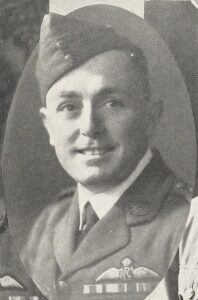
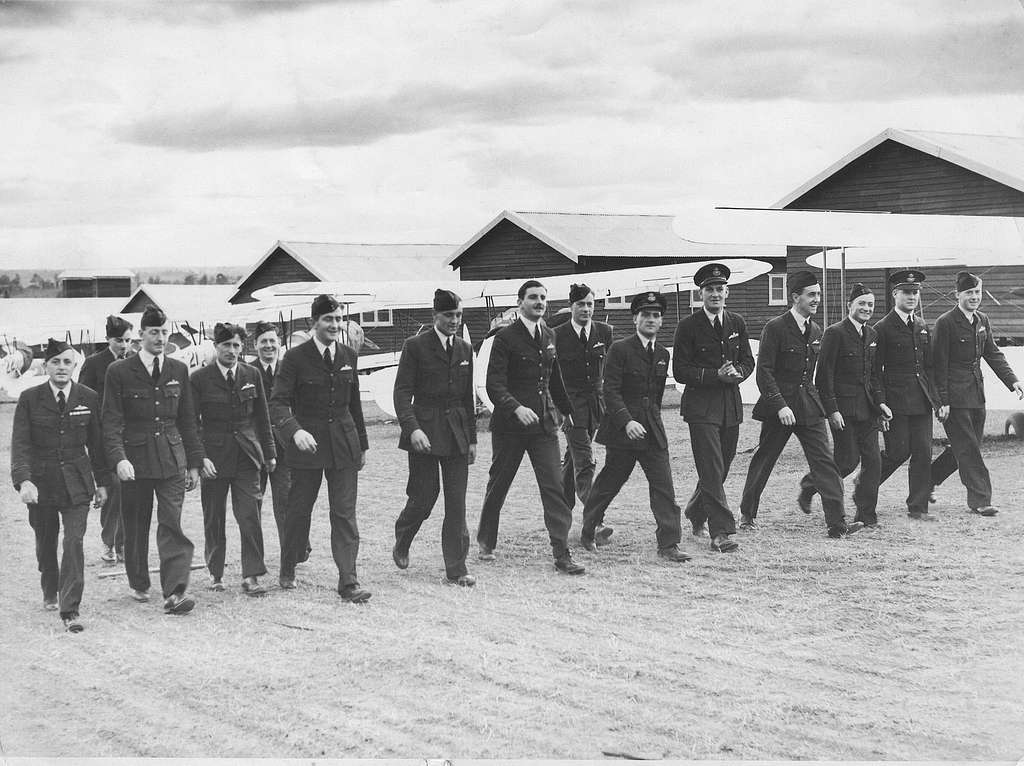
Captain Fredrick George Huxley, 1892 – 1960
Fred Huxley grew up on King Island. He served in No 2 Squadron of the Australian Flying Corps, being the first AFC pilot to shoot down an enemy aircraft. He was awarded the Military Cross.
In early 1921 he flew across Bass Strait from Victoria to King Island with his wife and daughter as passengers. He then conducted short joy flights throughout Tasmania for six months and crashing twice! This was one of the first opportunities Tasmanians had to see a plane or had the opportunity to fly in one.
He was the third pilot for the fledgling airline QANTAS in 1922, then returned to Tasmania in 1923 as the Aviation Officer for the Shell Company.
Huxley was a founding member of the Australian Aero Club (Tasmanian Section). He was an active member and aviator with the club.
He also had an active role in advising local municipalities on aerodrome locations.
During the Second World War he re-enlisted in the RAAF as a pilot instructor, rising to the rank of Wing Commander as second in charge of the Air Training Corps (the Air Cadets today).
Fred Huxley – a pioneering Tasmanian Aviator

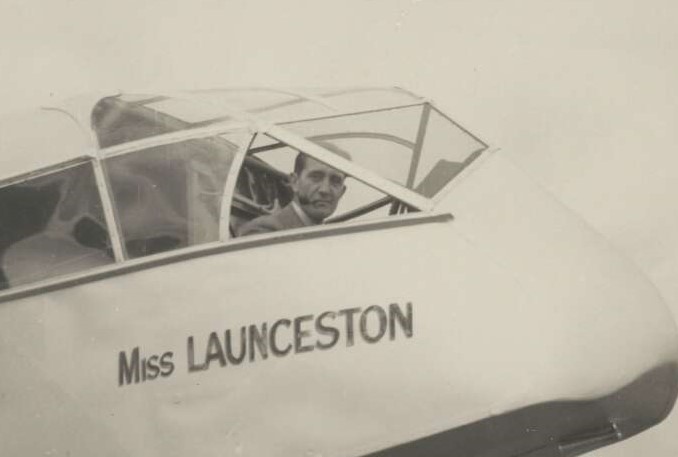

Lawrence McKenzie Johnson, 1904 – 1958
Lawrence Johnson was a young Victorian pilot based at Western Junction (Launceston). He was the Tasmanian Manager of Matthews Aviation, which provided pilot instruction for the Australian Aero Club (Tasmanian Section) from late 1930.
When Tasmania’s second aerodrome was ready on Flinders island, Johnson started his own airline to operate passenger services in his Desoutter monoplane, Miss Flinders, from 19 March 1932.
Johnson joined with Victor and Ivan Holyman to operate Tasmanian Aerial Services in October 1932. They flew from Western Junction to Flinders and King Islands, and the north west coast aerodromes. A year later they started a passenger service between Launceston and Melbourne with Miss Launceston. He was the second pilot to fly across Bass Strait 100 times.
From 1934 to 1937 he was a pilot instructor with the Aero Club in Hobart and then the Chief instructor of the Royal Victorian Aero Club.
In 1937 Lawrence Johnson re-joined Ivan Holyman at Australian National Airways as a pilot and instructor in their flying school at Essendon.
With the outbreak of the Second World War he became the A.N.A. Operations Superintendent. He held several senior managerial positions within A.N.A. until the company was sold in 1957.
Lawrence Johnson – the pioneer of Tasmanian commercial aviation
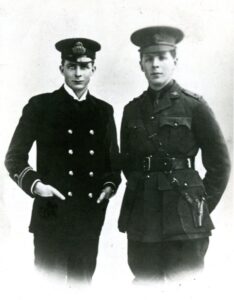
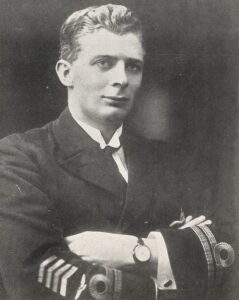
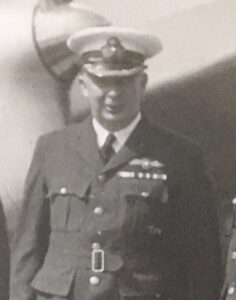
Captain Victor Clive Holyman, 1894 – 1934
Brothers Ivan and Victor Holyman were grandsons of the founder of W. Holyman and Sons which operated a shipping service in Tasmania and across Bass Strait.
Captain Victor Holyman was a sea captain and served as a pilot in the Royal Naval Air Service during the First World War. After the war, he returned to sea, captaining W. Holyman and Sons ships.
He was a founding member of the Australian Aero Club (Tasmanian Section) and its first Vice-President.
In 1932 Victor joined his brother Ivan in diversifying the families transport interests into aviation, with Tasmanian Aerial Services, which was later renamed Holyman’s Airways. He was the Managing Director and Chief Pilot.
In October 1934, Holyman’s Airways took delivery of the new Miss Hobart. With this 12-seater airliner, they would expand their passenger and mail services across Bass Strait. On 19 October, the plane was lost in the sea near Wilson’s Promontory with all onboard dying, including Victor Holyman.
Victor was survived by his wife Hazel, who would go on to train A.N.A. air hostesses.
Victor Holyman – the airline visionary

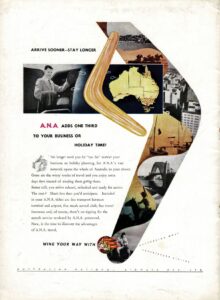
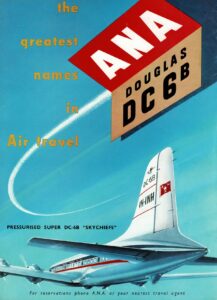
Sir Ivan Nello Holyman, 1896 – 1957
Brothers Ivan and Victor Holyman were grandsons of the founder of the W. Holyman and Sons, which operated a shipping service in Tasmania and across Bass Strait.
Captain Ivan Holyman served in the Australian Infantry Force during the First World War and was awarded the Military Cross.
He was a manager in the family’s shipping business and joined his brother in diversifying their transport interests into aviation, with Tasmanian Aerial Services in 1932, which was later renamed Holyman’s Airways.
With the loss of his brother Victor in the Miss Hobart crash, Ivan took over at the helm of Holyman’s Airways in 1934. Under his stewardship the airline expanded its operation to include mainland routes. It then became Australian National Airways (A.N.A.) in 1936 with Ivan the Managing Director.
A.N.A. was the largest domestic airline in Australia in the late 1930s and 1940s.
With the death of Sir Ivan Holman in 1957, A.N.A. was sold to Ansett, becoming Ansett-ANA, and finally Ansett, which ceased operations in 2001.
Sir Ivan Holyman – a True Giant of Tasmanian Aviation

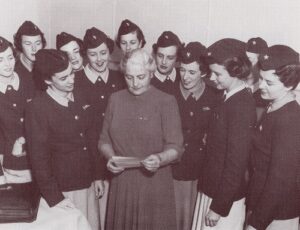
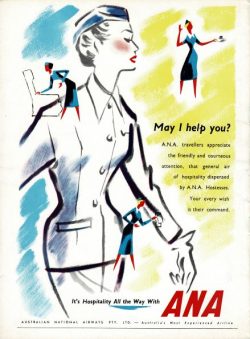
‘Matron’ Hazel Holyman, 1899 – 1992
Hazell was the wife of Captain Victor Holyman. They were married in 1928.
She was a crucial part of the Tasmanian Aerial Services operation. She looked after the passengers, driving them from the Launceston airline office to the plane at Western Junction. She provided biscuits and a thermos of tea or coffee for the flight, and when needed, an encouraging word to any apprehensive passengers.
When she became the Hostess Superintendent of Australian National Airways, Hazell recruited, trained, and supervised the air hostesses.
While she ruled the hostesses with a rod of iron and was renowned for her steely grey eyes that could spot dirty shoes, crooked stocking seams and soiled, unpressed uniforms at fifty paces most hostesses soon realised she had a heart of gold.
Matron Holyman (as she became known), believed in first class service and that hostesses were essentially a public relations job. She was one of the first to realise that airlines are largely judged by the people the passengers spend most time with – the air hostesses. As such, the “Matron” encouraged hostesses to speak with every passenger insisting they allocate the time to do this.
When Hazel retired in 1955, A.N.A had almost 200 air hostesses.
Hazel Holyman – The Pioneering Air Hostess
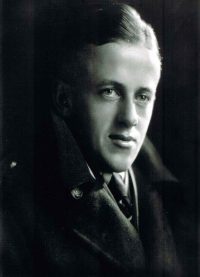
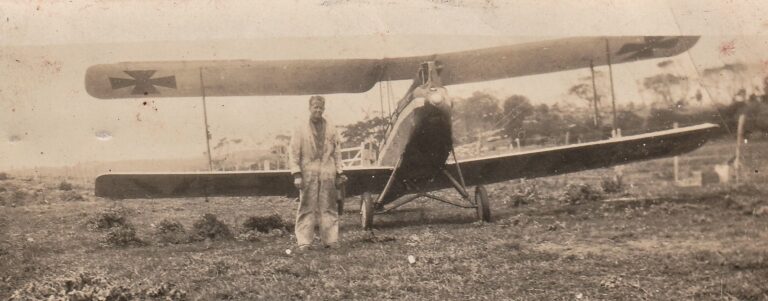
Norman Morris Chapman, 1899 – 1934
Norman Chapman grew up in Hobart and then he joined the merchant navy, gaining a Master Mariner Certificate. He learnt to fly in 1926 with the Victorian Section of Australian Aero Club.
When the economic depression made it difficult to find positions in the merchant navy, Chapman turned to flying in 1931. He purchased a de Havilland DH.60 Gipsy Moth, VH-UKG, which was named Viking which he brought to Tasmania in February 1931 to conduct joy rides and pilot training. He piloted the Viking to be the first plane to land at Queenstown and also at the Great Lake in the Tasmanian highlands. Upon returning to Victoria in September 1931, he flew via Flinders Island, where a crash delayed his flight for over a month.
Chapman was employed as a pilot for Matthews Aviation in 1932 operating the amphibian planes. This predominantly was on their Bass Strait passenger service. He was the first pilot to fly across Bass Strait 100 times. When these services were halted, he joined Qantas in August 1934 as one of the pilots to fly the new Darwin to Singapore air mail service. Shortly afterwards, on 3 October 1935, he was the pilot of the Qantas DH.50J Atalanta on a flight between Longreach and Camooweal which crashed. Chapman and the two passengers were killed. He was survived by his wife and two sons.
More information is available at the Chapman family website.
